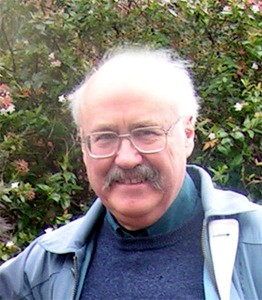
S oliloquy on a Lambent [double-bass] Tailpiece’ is a piece that was commissioned by Roger Dean and Ensemble LYSIS in 1980. It is, to me, both challenging and extremely attractive in its design and execution.
T he piece begins with ruminations of the double bass. The tapping on its ebony tailpiece its provokes the clarinet and then the violin, who are in turn driven to explore the outer ranges of their instruments’ timbres, pitch-ranges, and expressive textures.
T he control that both Jenkin and Smith and Dean achieve, in going from delicate sounds to aggressive/overtones-dense/multiphonic ones and back again, sometimes within a single breath or bowstroke, is impressive. Cresswell’s markings on the clarinet and violin parts counsel them to “revel in whatever sound results”. Hmmm! That’s a permissiveness that really empowers the performer.
W hile this kind of thing might be de rigeur in jazz, it is surely not in chamber music. The composer’s instruction to exploit the effects that emerge extemporaneously is one that seems foreign to most classically-trained musicians.
O ther pieces that specify improvisational tapping include Will Gay Bottje’s ‘Suite for Six Violins’ (1965). “Use the flat part of fingers on different parts of the box. Some differentiation in timbre can be made using different areas and pressures. Dampen the strings so they won’t sound.”
Y ou get definite, pitched percussive sounds by tapping the tailpiece—low, resonant pitches of the bottom parts of the box itself, as opposed to the fuller, rounder sounds that would come from tapping belly of the instrument.
T he right-hand finger-trill or tremolo on the double-bass tailpiece in ‘Soliloquy’ is mostly finger-pad and finger-tip based. Not the finger nails... the harmonics/partials would be too high, too “clicky”.
T he challenge/problem is that novel effects like these can easily be taken too far—somewhat like the issue of ‘chord-worship’ in barbershop quartet singing. It’s an “intra-ensemble indulgence”: interesting among the ensemble members during rehearsals but maybe not suitable for performance or recording.
H owever, in the AustraLYSIS performance of ‘Soliloquy’ a wonderful balance is struck, between within-ensemble dialogue and interpretive communication to listeners/audience. The ‘suspension’ of Time for the harmonic and rhythmic enjoyment of the ensemble members is “a different process from the manipulation of durations as an interpretive act”, as Liz Garnett says (p. 127), and this difference can potentially detract aesthetically from the performers’ relationship to the audience. But in this AustraLYSIS performance the different processes productively coexist, in a way that enables us listeners to follow their internal dialogue, enter into it, understand it and enjoy it. It’s a mutual, interactive search for patterns that unify the music that’s being created, in the sense of David Cope’s terms ‘virtual music’ and ‘unification’. ‘Soliloquy’ is a pretext for enacting some risky, interesting, raw within-ensemble ‘unification’.

No comments:
Post a Comment